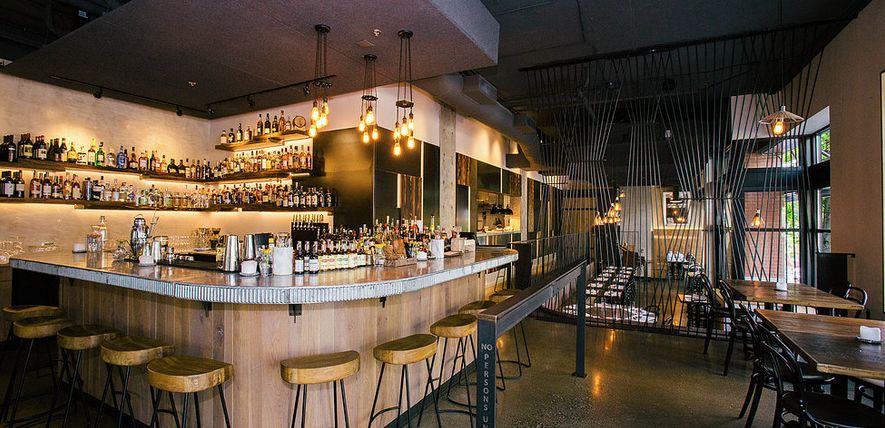Naka Kaiseki Restaurant Will Reopen as Adana

The space will get a quick refresh—some new stools, new lights, a roof over the bar. Photo via Naka's website.
Naka, the city’s only house of high-end kaiseki dining, will serve its last 10-course meal this Sunday, January 29. Chef Shota Nakajima says his restaurant at 14th and Pine will reopen as Adana, most likely in late February or early March. He wanted to retire the Naka name in case it makes sense to reopen a kaiseki restaurant at some point in the future. But Adana, the Japanese word for nickname, seemed apropos, he says, “because what I want is the same.”
What he wants, in this case, is coursed Japanese menus that delve into the country’s many non-sushi culinary traditions. But Naka’s fine dining prices didn’t exactly lend themselves to coming in on the regular. “That was my biggest struggle,” says Nakajima. “I want to see more of the same faces; my favorite thing about restaurants is the regulars.” Naka isn't the kind of place where you show up without a reservation, and last-minute cancellations often meant the restaurant was eating (literally or financially) maybe 40 courses worth of ingredients on a Saturday night.
Adana will serve three-course menus for $37 apiece; each course will have three different options—the better to accommodate dietary restrictions. Dishes will be “a little more homey,” says Nakajima, a chef twist on stuff he grew up with. His examples don’t actually sound that different from Naka, just a little less luxe (and with simpler plating)—mackerel dry-aged for a few days then grilled on charcoal, or a dish of Napa cabbage and scallops braised in dashi that Nakajima’s mom made when he was growing up.
Each menu will start with an amuse bouche and be just as seasonal as in the Naka days, says Nakajima; customers can order dessert and/or miso, rice, and pickles to round things out.
Adana will also be open seven days a week, compared with Naka’s five. Dustin Haarstad will still captain the bar program, and the bar menu will get a similar casual makeover, to add dishes like yakisoba (choose salt or sauce style) or sticky-rich fried oxtail—mercifully, the chicken mabushi bowl and the katsu sandwich will stay. But Nakajima’s not entirely ready to say farewell to his 10-course kaiseki menu. Adana will resurrect this practice every quarter, with tickets on sale in advance. He's doing it, he says, for himself and his staff as much as diners.
There's been a spate of restaurants reconcepting of late, all of them tilting toward something more accessible, and definitely more affordable. Just like the rest of us, chefs are trying to figure out what Seattle's about these days. For a guy still in his 20s, Nakajima has a refreshingly old-school view of hospitality—it's his job to give customers what they want. And a full dining room energizes a kitchen like nothing else, he says. Still, he hopes there comes a time when he can bring back the Naka name and Japan's kaiseki tradition: "I don't want to give up on fine dining."




